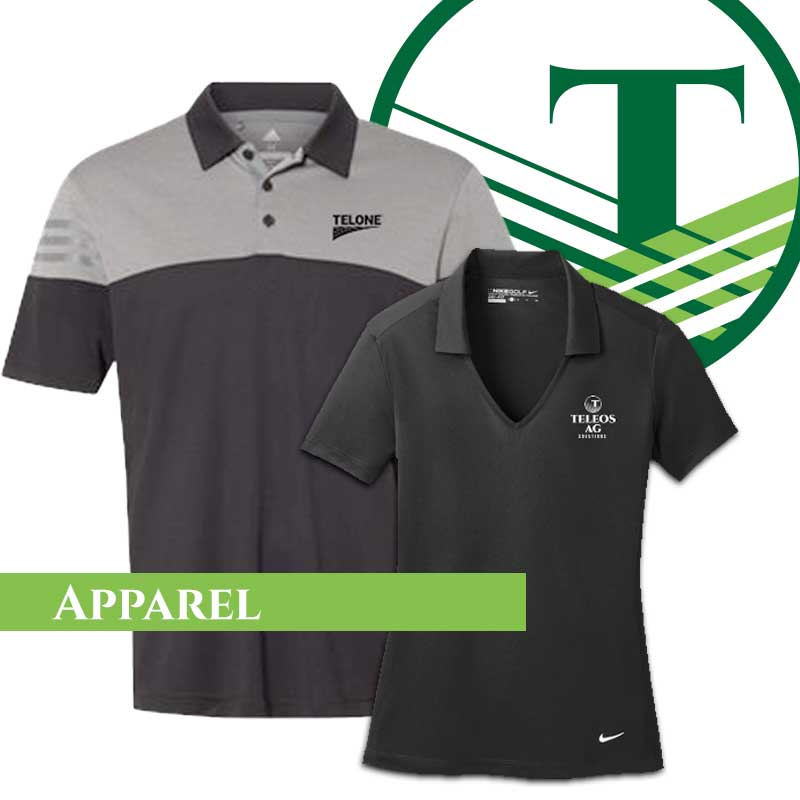You want your TELONE™ fumigants bulk tank to be strong, safe, legal, and trouble-free. One key is to select a properly designed tank. The TELONE™ Storage and Handling Guide lists Teleos’ requirements and recommendations. Below is provided as a courtesy only. The burden is on the tank owner to assess suitability of their tank for stationary container of flammable liquids. Download a PDF version of this Tip Sheet, here.
STRONG, SAFE, LEGAL, AND TROUBLE-FREE
Choosing the right tank to store TELONE™ II can seem daunting. You want your bulk tank to be strong, safe, legal, and trouble-free. Teleos has provided a helpful tip sheet to help navigate the complex environment of storing bulk TELONE ™II soil fumigant. This guide provides detailed information on the factors to consider when selecting a bulk tank, such as the tank’s material, capacity, pressure rating, venting requirements, and more.
THE RIGHT TANK
BUY A CODE TANK FOR FLAMMABLES
“Code” tanks are built to an association or industry standard and assure a level of quality, safety, and performance. This is important for flammable products. Groups like Underwriters Laboratories (UL) or the American Petroleum Institute (API) allow tank manufacturers to place a code plate on tanks approved and built to these standards.
IF YOUR TANK ISN’T CODE
Most codes require a metal nameplate which states that it meets a particular code. If your tank’s nameplate is not present, or does not indicate a code, consult the tank manufacturer to determine if the tank meets any code.
If your tank is not a code tank, you can:
- Buy a new code tank. This avoids concerns about your current tank but does entail cost of a tank.
- Show your tank meets recognized standards. Obtain a letter from a licensed Professional Engineer stating that the tank meets the requirements of the use.
RECOGNIZING A CODE TANK
Besides the visual indication of having an emergency vent, suitable code tanks will have a nameplate. A UL-142 tank may say “UL-142” or “Underwriters Laboratories Inc; ABOVE GROUND TANK FOR FLAMMABLE LIQUIDS”. A suitable API tank may simply say “API-650 APP. J”.

WHY DO I NEED A CODE TANK?
1,3-Dichloropropene products are Class 1C flammable liquids. National Fire Protection Association (NFPA) “Flammable and Combustible Liquids Code 30” describes the tank requirements for flammable liquids. NFPA codes are adopted by individual states into law.
NFPA 30 says tanks must be “designed and built in accordance with recognized good engineering standards” and lists specific tank codes such as UL-142, API 12, or API 650, “or approved equivalents.” Approved means by the authority having jurisdiction over regulation of flammable and combustible storage. Most often, this is the local or state fire marshal.
Using a recognized standards (UL 142, API 650 etc.) provides an unbiased safety benchmark. The “or approved equivalent” phrase does provide some flexibility.
So, NFPA does not explicitly require code tanks, rather, it places the burden of judgement about “approved equivalent” tank design on the Authority Having Jurisdiction (AHJ)—usually the local fire marshal—and the tank owner or user. It is more practical to purchase a recognized code tank than to show that a non-code tank should be an “approved equivalent.”
BULK TANK SELECTION
OTHER TANK CONSIDERATIONS
SPECIFIC GRAVITY: TELONE™ fumigants are heavier than water (i.e., they have higher specific gravity). Be sure your tank supplier knows this and provides documentation declaring suitability for higher specific gravity.
EMERGENCY VENTING: Flammable liquids require emergency venting based on the tank size, code, shape, etc. and allowable working pressure. An atmospheric tank typically needs an emergency vent much larger than a pressure vessel of the same size. This could be 8”, 10” or even larger for the most common atmospheric tanks used with TELONE™ products. Inadequate emergency vent size is a tip-off that the tank may not be suitable.
TRANSPORTATION OR LP TANKS: Some facilities have utilized former rail cars or DOT approved transport tanks as stationary storage tanks. Others have used former ASME tanks for liquid propane. Although these are recognized standards, the burden is higher on the tank owner to assess suitability as a stationary container of flammable liquids. This is especially true for emergency venting. The required vent size will vary because the rated tank pressure will vary. Check with a knowledgeable engineer.
WORKING PRESSURE: Tanks may be built and approved as atmospheric pressure, low pressure, or high pressure tanks. Each use has different tank and venting requirements. As mentioned above, consult a knowledgeable engineer about proper working pressure and venting requirements to the type and expected use pattern of your tank.
TANK AGE: Age alone is not an indicator of suitability but be diligent in evaluating continued use of older tanks or tanks being converted from other uses. Moisture and oxygen can be minimized but not eliminated, so the longer a tank is in service should be factor in determining whether it should be inspected for corrosion or other weakness by a professional service.
MILD STEEL VS. STAINLESS STEEL: Most tanks built to meet flammable standards like UL-142 are stainless steel, but mild steel is also in successful use with TELONE™. Each has advantages and disadvantages. Both can corrode if not properly managed. Mild steel will typically form rust over larger areas, while stainless will tend to pit corrode—especially at weld seams. Combustible materials of construction like plastic or fiberglass are unacceptable.
TANK-IN-TANK OR DOUBLE-WALLED TANKS: These designs which incorporate their own secondary containment are allowed, but discouraged because it is difficult to inspect the tank and containment integrity. If used, tank-in-tank designs must meet emergency venting and leak monitoring requirements in NFPA 30. NFPA also limits their size to 12,000 gallons or less.
YOUR EXISTING TANK: The tank owner is responsible for assuring it is suitable for continued use with flammable liquids. This may include visual inspections by the owner, or periodic external or internal inspections using a variety of technologies. Bulk tanks should have a thorough inspection by knowledgeable professionals as prescribed by the requirements of the code to which it was built. As an alternative, your tank inspector can follow guidance in STI SP001- 03, Standard for Inspection of Inservice Shop Fabricated Aboveground Tanks for Storage of Combustible and Flammable Liquids. STI-SP001-03 is available from the Steel Tank Institute (www.steeltank.com).
Disclaimer:
The resources and information provided are meant purely for educational discussion, contains only general information about legal matters, and is not to be construed as advice. Please note that any information or resources provided are not legal or regulatory advice, and should not be treated as such. You must not rely on the information provided as an alternative to legal advice from your attorney or other professional services. Teleos Ag encourages readers to consult with counsel, and their local, county, and state regulators. We make no representations or warranties, express or implied, in relation to the information provided through our resources and blog posts. It is the readers responsibility to know the laws related to 1,3- D, appropriate PPE, Licensing, etc., in his or her City, County, State, and Country.
- 2025 PNW Stewardship Meetings - June 11, 2025
- AIR DRYERS: PROTECTING FUMIGANT QUALITY & EQUIPMENT - May 16, 2025
- TELONE™ Stewardship Tip Sheet: Nitrogen Use for TELONE™ - February 20, 2025

